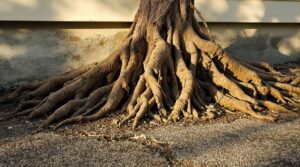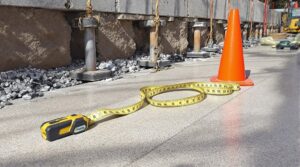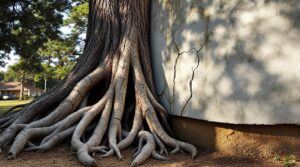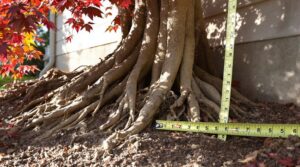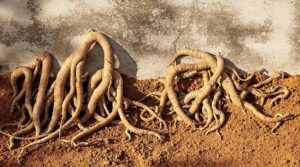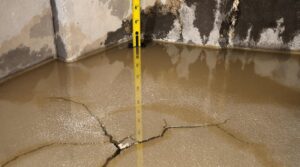Palm tree roots can potentially damage foundations due to their varied and complex growth patterns, which can extend several meters deep and wide, depending on the species, climate, and soil conditions. Factors such as root depth, soil composition, and moisture levels influence the likelihood of damage. Certain palm species, like Areca and Queen Palms, pose a higher risk due to aggressive root growth. Understanding these factors and identifying high-risk species can help mitigate potential foundation problems, a vital consideration for those seeking to safeguard their structures.
Key Takeaways
- Palm tree roots can damage foundations, but the likelihood depends on the palm species, climate, and soil conditions.
- Certain palm species, such as the Areca Palm and Queen Palm, have aggressive root growth and are more likely to cause damage.
- Factors like root depth, soil composition, and moisture levels affect the risk of damage, with shallow root growth being more problematic.
- Visible signs of foundation damage include cracks in walls and floors, uneven door and window frames, and soil displacement.
- Installing root barriers and regular pruning can help prevent or mitigate potential foundation damage from palm tree roots.
Understanding Palm Tree Root Growth Patterns
While palm trees are often associated with shallow root systems, their root growth patterns are more complex and varied than commonly assumed.
Research indicates that some palm species develop extensive and deep root systems, while others produce root growth characterized by numerous small, fibrous roots close to the soil surface.
Root depth and spread can vary greatly depending on factors such as palm species, climate, and soil conditions. Some palms can develop root systems extending several meters deep and wide, while others may retain most of their root growth within a small radius around the trunk.
Understanding the unique root growth patterns of different palm species can help assess potential risks to nearby structures. A detailed examination of root systems is essential to accurately evaluate the possibility of damage to foundations or other underground infrastructure.
Analyzing root growth and distribution is a critical step in this process.
Factors That Influence Root-Related Damage
The extent to which palm tree roots can cause damage to foundations and other underground infrastructure is influenced by a complex interplay of factors.
Root depth, soil composition, and moisture levels all play a vital role in determining the likelihood and severity of root-related damage. In general, palm tree roots tend to grow more deeply in well-draining soils, reducing the risk of damage to foundations. Conversely, shallow root growth is more common in poorly draining soils, increasing the likelihood of root-related damage.
Additionally, the presence of underground water sources or irrigation systems can encourage root growth, potentially exacerbating damage. Soil composition, including factors such as pH, nutrient availability, and soil structure, can also impact root growth patterns and the potential for damage.
Understanding these factors is essential for evaluating the risk of root-related damage and developing effective mitigation strategies. Soil conditions and root growth patterns must be carefully examined.
Types of Palm Trees That Pose a Higher Risk
Certain palm tree species are more prone to causing foundation damage due to their aggressive root growth patterns and large root systems. These trees can cause significant damage to foundations, especially if planted near buildings or other structures. The following table highlights some of the most common palm tree species that pose a higher risk to foundations.
| Palm Tree Species | Root Growth Pattern | Risk Level |
|---|---|---|
| Areca Palm | Aggressive, spreading | High |
| Queen Palm | Deep, extensive | Medium-High |
| Royal Palm | Deep, vertical | Medium |
| Coconut Palm | Shallow, spreading | Low-Medium |
| Palmetto Palm | Shallow, clumping | Low |
Understanding the characteristics of these palm tree species can help property owners and landscapers make informed decisions when planting or maintaining palm trees near buildings or other structures. Regular maintenance and monitoring can also help mitigate the risk of foundation damage.
Signs of Foundation Damage Caused by Palm Tree Roots
How can property owners and landscapers identify potential foundation damage caused by palm tree roots?
Careful observation of the surrounding area can reveal signs of foundation damage. Palm tree roots can cause significant soil displacement, which can lead to foundation problems.
Some common signs of foundation damage caused by palm tree roots include:
- Visible cracks in walls and floors: As the foundation shifts, cracks can appear in walls and floors, indicating potential damage.
- Soil displacement and settlement: As palm tree roots grow, they can displace soil, causing it to settle unevenly, which can lead to foundation problems.
- Uneven door and window frames: If the foundation is damaged, door and window frames may become uneven, making it difficult to open and close them properly.
Preventative Measures and Maintenance Strategies
While palm tree roots can cause significant damage to foundations, property owners and landscapers can take proactive steps to mitigate these risks through regular maintenance and preventative measures.
One effective method is to install root barriers, which are physical or chemical barriers that prevent roots from growing into specific areas. These barriers can be installed during the initial planting of the palm tree or retrofitted around existing trees.
Regular pruning is also essential to prevent overgrowth and reduce the risk of root damage. Pruning should focus on removing dead or damaged fronds, as well as any roots that have grown beyond the designated root zone.
Additionally, regular inspections can help identify potential issues before they become major problems.
Frequently Asked Questions
Can Palm Tree Roots Cause Damage to a House's Plumbing System?
Palm tree roots can cause plumbing issues through root intrusion, where the roots infiltrate and obstruct pipes, potentially leading to blockages, pipe damage, and expensive repairs, especially if the pipes are older or compromised.
How Much Does Palm Tree Root Removal Typically Cost?
Beneath the surface, a ticking time bomb of twisted tendrils: the cost of palm tree root removal, a necessary evil, typically ranges from $300 to $1,500, depending on palm tree maintenance and thorough root system analysis.
Are There Laws Regulating Palm Tree Planting Near Foundations?
Municipalities enforce planting regulations to guarantee foundation safety, specifying minimum distances between palm trees and structures. Regulations vary by region, taking into account factors like soil type, tree species, and building codes to mitigate potential damage.
Can Palm Trees Be Replanted After Root Removal?
Palm trees can be replanted after root removal, but proper palm tree care is essential to prevent root regrowth from causing future damage, requiring regular monitoring and potential re-excavation to maintain structural integrity.
Does Homeowners Insurance Cover Palm Tree Root Damage?
When it rains, it pours; palm tree root damage can be costly. Insurance policies may cover root damage, but typically only if it's sudden and accidental, not a gradual process that could have been prevented with maintenance.
